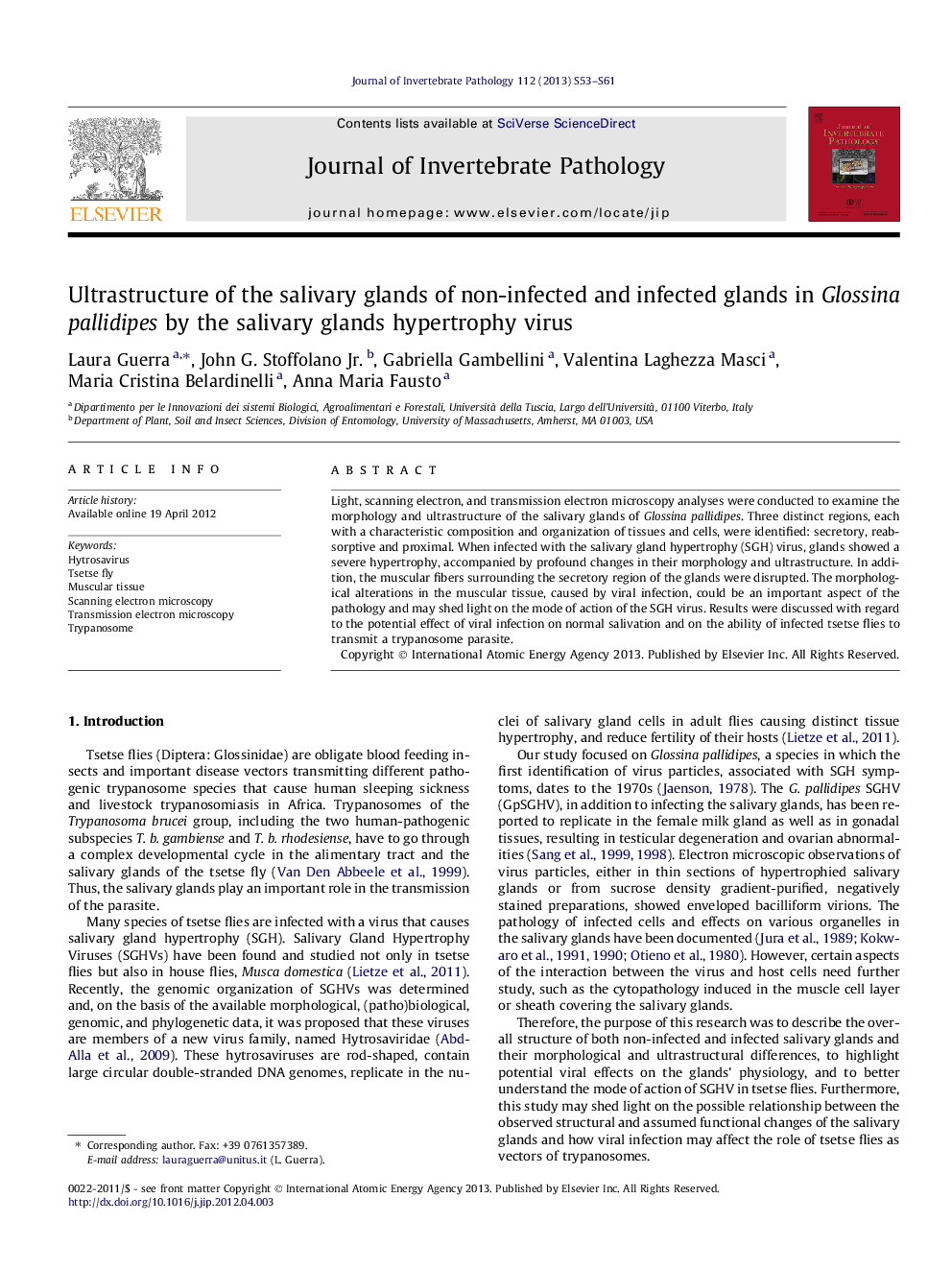| Article ID | Journal | Published Year | Pages | File Type |
|---|---|---|---|---|
| 6389607 | Journal of Invertebrate Pathology | 2013 | 9 Pages |
Light, scanning electron, and transmission electron microscopy analyses were conducted to examine the morphology and ultrastructure of the salivary glands of Glossina pallidipes. Three distinct regions, each with a characteristic composition and organization of tissues and cells, were identified: secretory, reabsorptive and proximal. When infected with the salivary gland hypertrophy (SGH) virus, glands showed a severe hypertrophy, accompanied by profound changes in their morphology and ultrastructure. In addition, the muscular fibers surrounding the secretory region of the glands were disrupted. The morphological alterations in the muscular tissue, caused by viral infection, could be an important aspect of the pathology and may shed light on the mode of action of the SGH virus. Results were discussed with regard to the potential effect of viral infection on normal salivation and on the ability of infected tsetse flies to transmit a trypanosome parasite.
Graphical abstractDownload full-size imageHighlights⺠The salivary glands of Glossina pallidipes are characterized by three regions. ⺠A muscular coat covers the secretory region of the salivary glands. ⺠SGHV causes morphological and ultrastructural alterations on the entire gland. ⺠Because of the viral infection, the muscle tissue loses its organization. ⺠The morphological alterations could impair the physiology of salivary glands.
